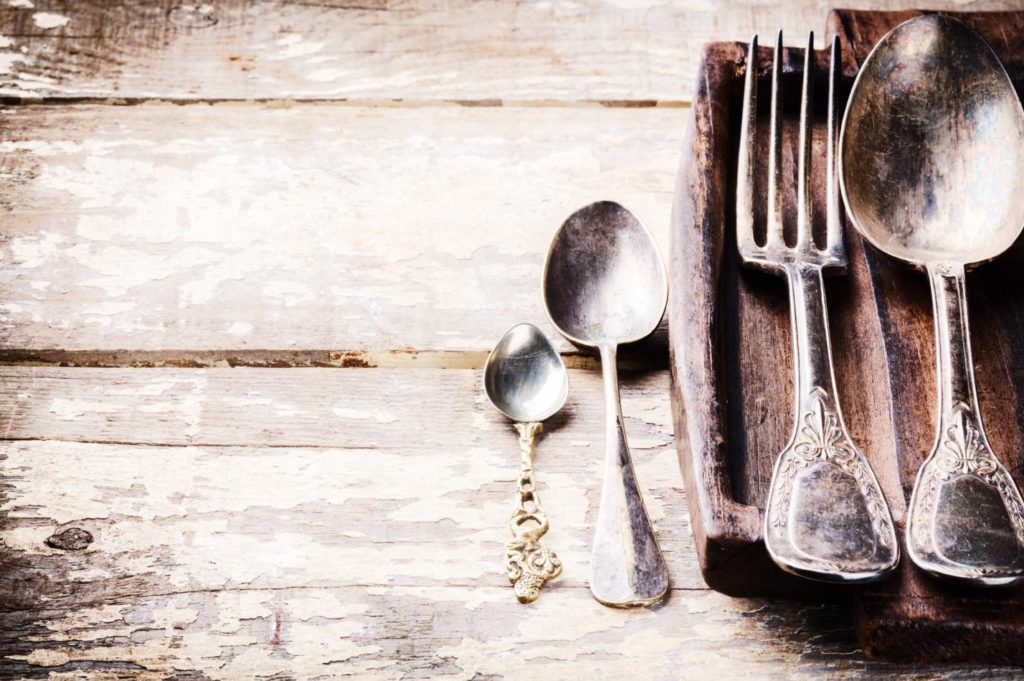History & Care: The Guide to Vintage Silverware

Flatware has become such an everyday feature of our lives that we rarely stop to consider its origins and history. Today, you can go to any department store and find a set of stainless steel silverware, but that wasn’t always the case.
In fact, the cutlery that you see today was predated by vintage silverware. Interested? Here’s a deep dive into the history of vintage silverware.
History of Vintage Silver Flatware
The existence of flatware dates back to ancient times. However, the more refined flatware made of metal materials has only been commonly used in the last 4 centuries. England has been long renowned as the best producer of flatware since the 1600s.
The following century saw the rise of silversmiths who specialized in turning silver coins into top-quality cutlery. These silversmiths would later be known as cutlers or those who make and sell cutlery. This silverware was typically carried around by their owners and was deemed as very personal items. Silverware wasn’t globally popular until the 18th century when the price of silver was afforable enough to appeal to middle-class families.
Sterling silver flatware saw a decline in popularity after the invention of stainless steel flatware fabled to have been invented by Harry Brearley in 1916.
Vintage Silverware Today
Vintage silverware is still very much in vogue. The skillful craftsmanship utilized to create the ornate filigree and lasting-designs of vintage silverware make it a well-sought after collector’s item within the antiquing community. Vintage silverware can also be found in ‘living museums” which aim to recreate specific time periods.
Some top-tier venues may offer vintage silverware for special events including weddings and dinners. However, this isn’t common practice as vintage silverware is typically held as a part of a collection and not used for eating.
How to Care for Vintage Silverware
Vintage silverware requires very delicate handling and specific care. Their ornate patterns can cause dust and debris to settle in hard-to-reach places. Additionally, collectors must take care to prevent rust which naturally occurs due to oxidation. Vintage silverware may need polishing alongside a strict cleaning regime.
While cleaning vintage silverware isn’t particularly difficult, it’s best to let a professional take care of these duties. If your collection is particularly valuable or features precious stones, hiring someone to pay special attention to detail might be your best bet.
That said, if you have a collection that you would prefer to clean at home, there are plenty of DIY methods that will help to extend your silverware’s life and protect its shine. Here’s how to clean vintage silverware at home.
- Place a dinner knife closest to the charger, then the salad knife, teaspoon, and soup spoon following
- Place a butter knife on top of the bread plate
- Place a dessert spoon directly above the charger
- Place a water glass above the dinner knife, with your red and white wine glasses following
- If you’re using individual salt and pepper shakers, place them above the dessert spoon
- Place the place card above the dessert spoon
Final Thoughts
Whether you are in the market for vintage silverware or simply want to keep your great grandmother’s collection as flawless as possible, it’s important to have a thorough understanding of the care that comes with owning vintage silverware. Without proper care, the silverware will tarnish and gradually lose its value. Take pride in caring for your silverware!